Asking for forgiveness by George Anastasiadis (Original Painting)
Paintings by George Anastasiadis For Sale
-
Title: Asking for forgiveness
-
Artist: George Anastasiadis
-
Category: Paintings
-
Medium: SAKURA Pigma Micron Fineliners (Royal Talens), Acrylic colors on durex matt Schoeller paper.
-
Size (inches): 13.7795 X 19.685
-
Year: 2022
-
Framed?: Framed
-
Shipping from: Greece
Price: $3000
Artwork description
Pluto ( the giant figure on the left and back) does not listen and does not forgive.
Pluto reaps and keeps what belongs to him. Due to the horror caused only by listening to his name, we are not familiar with his artistic representation in the classical arts. Despite being an Olympian, he wanted almost no contact with either Gods or humans, and always preferred his dark kingdom. He was awesome in battle and absolutely righteous.
He is forming the point of silence with the index finger of his hand, pointing to heaven. His hand is depicted long and airy as an allegorical extension of the walls of Troy, as he is dragging it out of the darkness that reigns in his world. He carries souls in his body as his inalienable acquisitions.
Right in the center, I put the figure – a symbol of Achilles, in the last moments of his death, ready to get perished forever into the black water of Styx. Styx was one of the five rivers of Hades, known as the River of Hate.
As a son of Thetis, he was described as an invulnerable and fearless warrior in battle. Soon after the death of his friend, he fell into the deadly sin of desecrating the dead body of Hector. Already known for his passion and anger for Vrisida, Achilles is described as a man of extreme emotions who gets angry and reacts without any control with a tendency to completely destroy all he considers his enemies. After Patroclus’s death, his resentment against the Trojans and Hector was so deep, that even the urging of his mother Thetis that if he returned to battle he would die, was unable to restrain him. Angry as he was, he fell into insults and desecration of Hector’s dead body. This act of his was a mortal sin and made the Gods decide on his own death.
After dragging Hector’s dead body behind his chariot, he kept the corpse unburied for eleven days, without any return of honor. On the twelfth day, Priam went to ask for his son’s body, to honor it as it should. Here is the key point that we have the conversion of Achilles who seems to ask for forgiveness for his disrespect to Hector, first from himself. His hospitable attitude towards Priam was a fact that made everyone wonder and evidence of Achilles’ inner need for forgiveness.
I chose to put on the right, the familiar form of Jesus, symbolizing the innocence of our childhood, repentance, and forgiveness.
Crossing the threshold of death, even at the last minute, when the Soul recognizes its mistakes and sins, then the way to Heaven will be revealed to it. Pluto’s index finger is pointing to Heaven. This stairway to heaven has been painted with colorful “stained glass” windows, pictured from behind. But even there, darkness tries to enter and tarnish the radiance and the Light, fighting fiercely to discover even a small crevice of the Soul. This is symbolized by the subtle diffusion of black behind all this vibrant polychromy.
The Soul is saved even at the last moment, as long as it sincerely repents. As one of the two robbers was saved on the Cross.
What really finally happened to Achilles’ Soul?
I sincerely do not know … What I do know is that my works are full of symbols and each of the viewers sees what he wants to see.

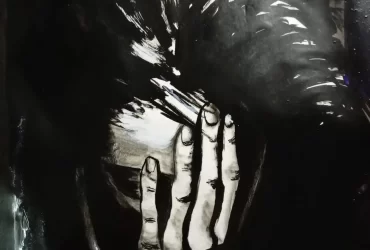
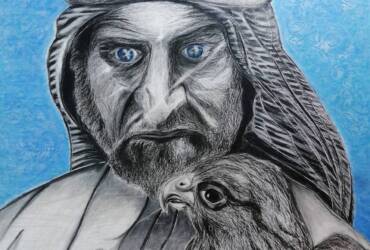
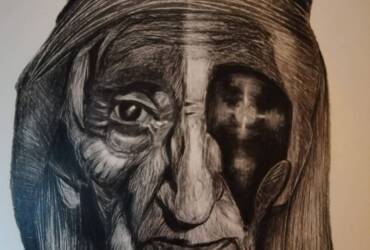

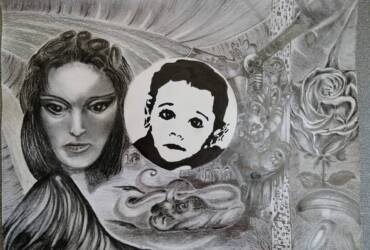
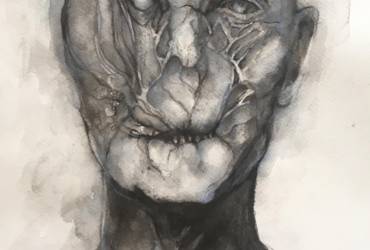
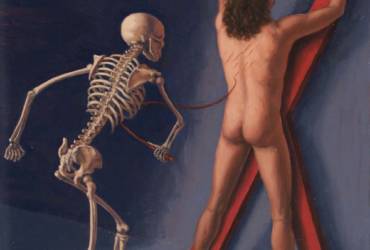
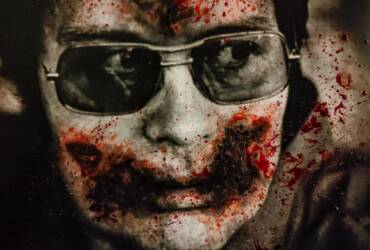
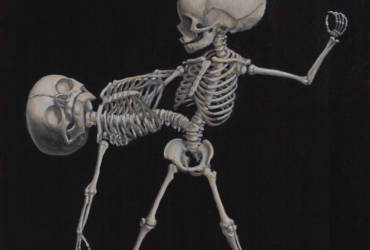

Leave a Comment
Your email address will not be published. required fields are marked *